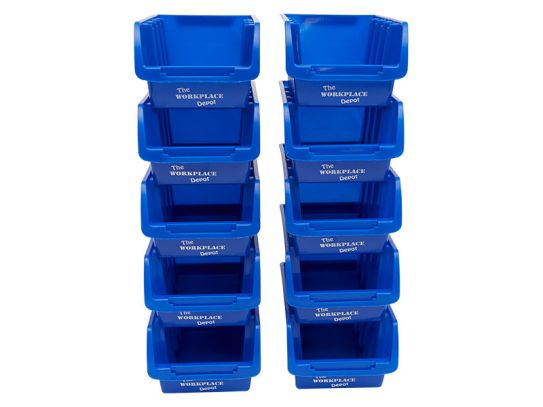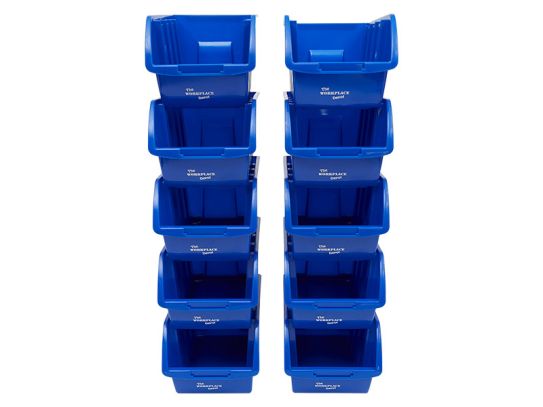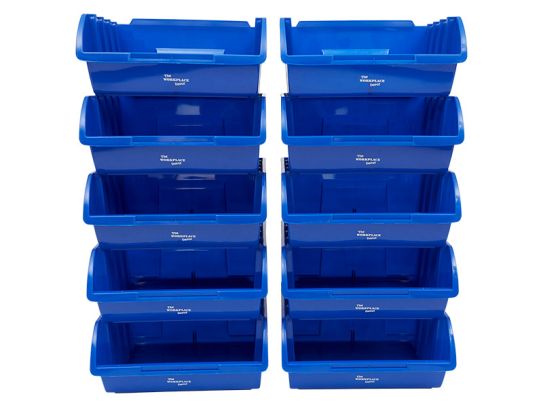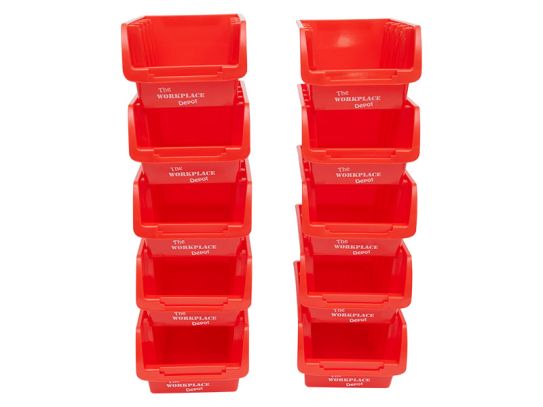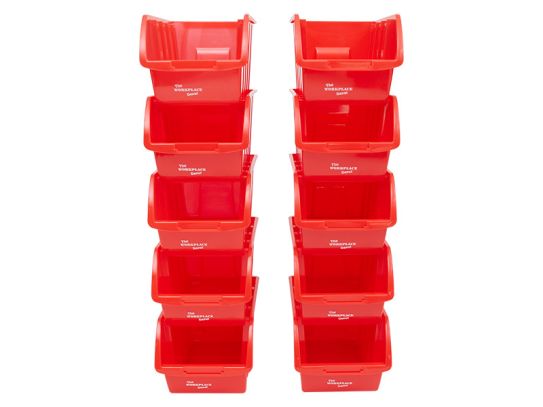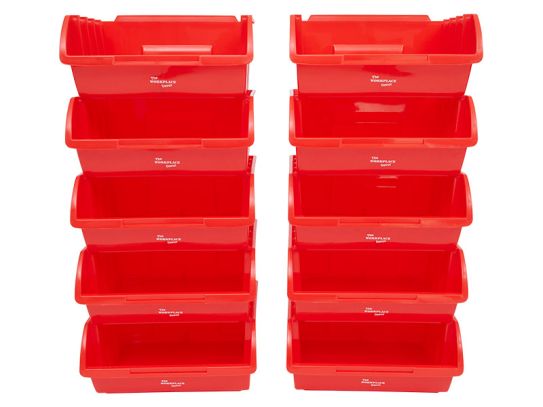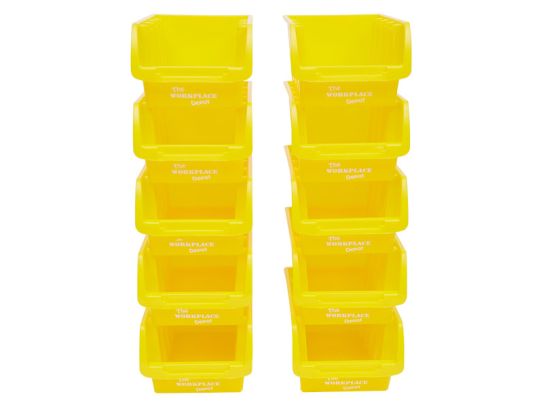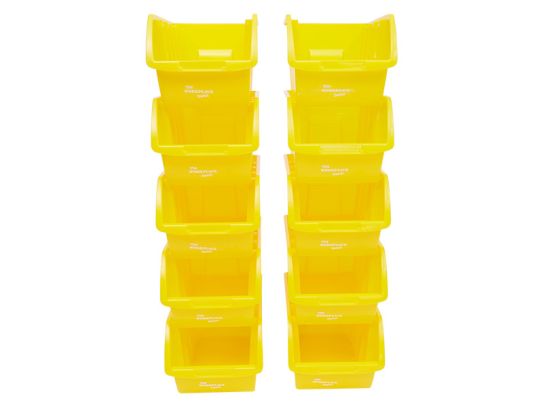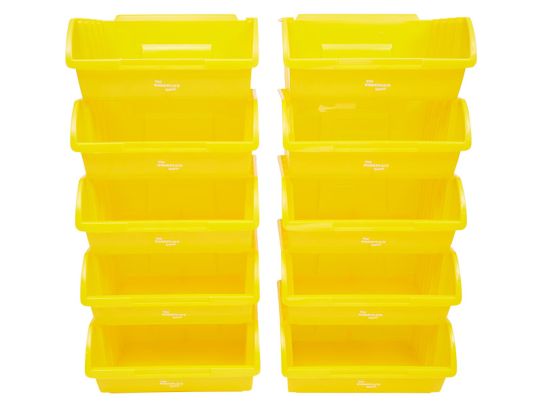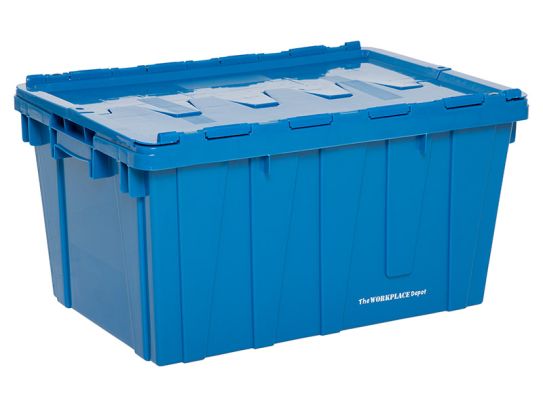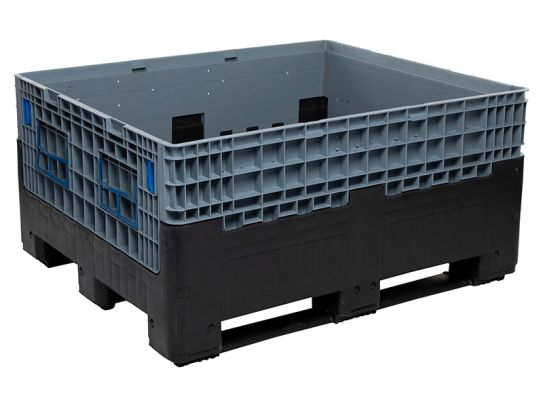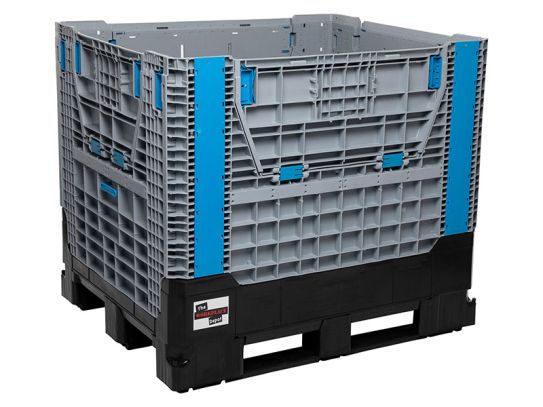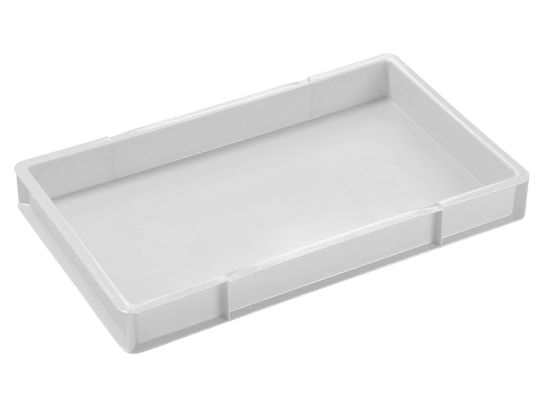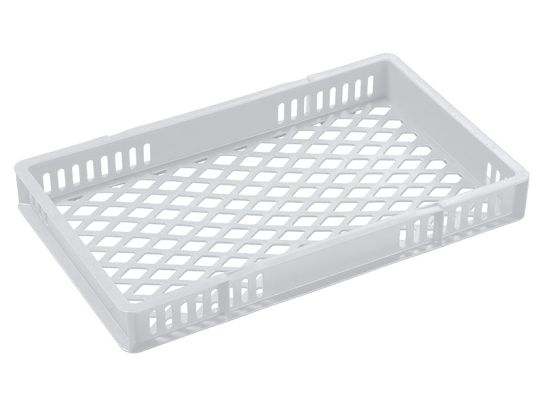Boxes & Containers
From Small To Large, We Have A Box For Every Occasion
Our range of boxes and containers has everything you need to keep your workplace organised and efficient. From our sturdy parts bins, perfect for small parts storage, to our versatile stack and nest containers, which can be easily stacked or nested for compact storage, we have it all. And for the ultimate in transportable storage, check out our lightweight aluminium flight cases. Plus, our pallet boxes are industrial quality and collapsible, making them perfect for when you need to save space. Don't miss out on our attached lid containers, with their heavy-duty plastic construction and interlocking hinged lids. Order now and take control of your workplace storage.
What Are Some Common Uses For Boxes & Containers?
There are many common uses for the types of boxes and containers in our range. Some possible uses include:
- Parts bins: These can be used for storing and organising small parts in a workshop or warehouse, such as screws, nuts, bolts, and other hardware.
- Euro containers: These can be used for storing and transporting a variety of items, such as tools, parts, and materials. They are often used in manufacturing, logistics, and distribution settings.
- Stack and nest containers: These are versatile and can be used for a wide range of purposes, such as storing and transporting goods, organising items in a warehouse or workshop, and providing a convenient way to transport items from one location to another.
- Pallet boxes: These are often used in industrial settings, such as warehouses and distribution centres, for storing and transporting goods on pallets. They can be easily folded down when not in use, saving space and making them easy to store.
- Attached lid containers: These are typically used for storing and transporting heavier items, such as tools and equipment. The interlocking hinged lids provide added security and stability for the contents of the container.
- Aluminium flight cases: These are commonly used for protecting and transporting delicate or sensitive items, such as electronic equipment, musical instruments, and other valuable items. They are lightweight and durable, making them an ideal choice for protecting items during transport.
What Are The Key Features To Consider When Choosing Boxes & Containers?
When choosing boxes and containers, there are several key features to consider, including:
- Size and capacity: It is important to choose boxes and containers that are the right size and capacity for the items you need to store or transport. Consider the dimensions and weight capacity of the boxes and containers, as well as any other constraints or requirements, such as the need for a particular type of pallet or compatibility with other storage or transport systems.
- Material: The material of the boxes and containers is important for several reasons. Durability, resistance to damage or wear, and ease of cleaning are all important factors to consider. Some common materials for boxes and containers include plastic, metal, cardboard, and wood.
- Design and functionality: Consider the design and functionality of the boxes and containers when choosing the right ones for your needs. For example, stack and nest containers can be stacked on top of each other or nested for compact storage, while pallet boxes can be easily collapsed and stored when not in use. Look for features such as attached lids, reinforced corners, and other features that can improve the functionality and usability of the boxes and containers.
- Compatibility: Make sure that the boxes and containers you choose are compatible with any other storage or transport systems you have in place, such as pallet racks, conveyor systems, or forklifts. This will ensure that you can easily and efficiently store and transport your goods using the boxes and containers.
- Price: Finally, consider the price of the boxes and containers when making your decision. While it is important to choose high-quality boxes and containers that will meet your needs, you also need to consider your budget and make sure that the boxes and containers you choose are within your price range. Look for value for money and consider any bulk purchasing discounts that may be available.
How Do I Know Which Size And Capacity Of Box Or Container To Choose?
When choosing the size and capacity of a box or container, it is important to consider the items you need to store or transport, as well as any other constraints or requirements.
First, consider the dimensions of the items you need to store or transport. Measure the length, width, and height of the items and make sure that the box or container you choose is large enough to accommodate them. Also consider the weight of the items, and make sure that the box or container you choose has a sufficient weight capacity.
Next, consider any other constraints or requirements that may affect your choice of size and capacity. For example, if you need to store or transport the items on pallets, make sure that the box or container is compatible with the size and type of pallet you are using. Similarly, if you need to use the boxes or containers with other storage or transport systems, such as conveyor belts or forklifts, make sure that the boxes or containers are compatible with those systems.
If you are unsure about the right size and capacity of box or container to choose, you can consult the manufacturer or supplier for advice and support. They can help you determine the right size and capacity based on your specific needs and requirements. Alternatively, you can use online calculators or tools that can help you estimate the size and capacity of the box or container you need.
What Safety Considerations Should Be Taken Into Account When Using Boxes & Containers?
When using boxes and containers, there are several safety considerations to take into account. Some of these include:
- Stability: Make sure that the boxes and containers are stable and secure when in use. Avoid overloading the boxes or containers, and use them on a stable and level surface to prevent them from tipping or collapsing.
- Lids and closures: If the boxes or containers have lids or closures, make sure that they are properly attached and securely closed to prevent items from falling out or spilling.
- Handling and lifting: Use proper lifting techniques when handling and lifting boxes and containers to avoid strain or injury. If the boxes or containers are heavy, consider using mechanical aids such as forklifts or pallet jacks to help with handling and lifting.
- Fire safety: Some materials used for boxes and containers, such as cardboard and wood, can be flammable. Keep boxes and containers away from sources of heat or flames, and make sure that they are stored in a safe and appropriate location.
- Chemical safety: If the boxes or containers are used for storing or transporting hazardous materials, make sure that they are compatible with the chemicals being stored and that they are properly labelled and stored in accordance with safety regulations.
It is important to use boxes and containers safely and responsibly to avoid accidents or injuries. Make sure that you are familiar with the proper use and handling of boxes and containers, and follow any instructions or guidelines provided by the manufacturer or supplier. If you have any questions or concerns about the safety of using boxes and containers, consult the manufacturer or supplier for advice and support.
Are There Any UK Or European Industry Standards Or Regulations That Apply To Boxes & Containers?
There are several industry standards and regulations that apply to boxes and containers in the UK and Europe. These include:
- BS EN 13522: 2009: This is the European standard for industrial packaging. It specifies requirements and testing methods for the materials, design, and performance of industrial packaging, including boxes, crates, and other containers.
- BS EN 13488: 2008: This is the European standard for transport packaging. It specifies requirements and testing methods for the materials, design, and performance of transport packaging, including boxes, crates, and other containers.
In addition to these European standards, there may also be national standards and regulations that apply to boxes and containers in the UK and other European countries. It is important to consult with the manufacturer or supplier, and to check with relevant authorities, to ensure that the boxes and containers you are using meet the applicable standards and regulations.
